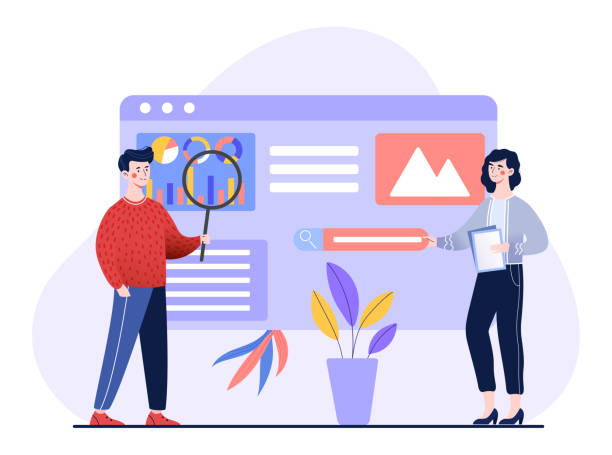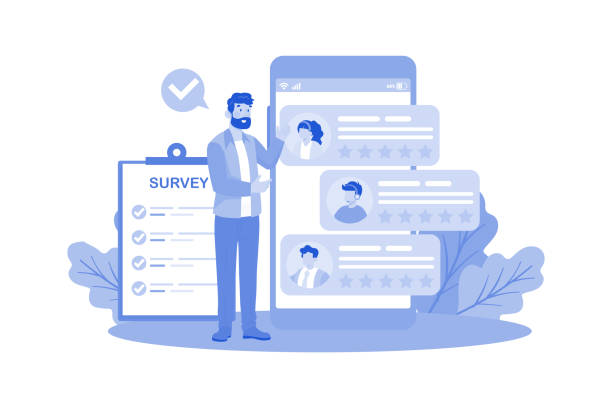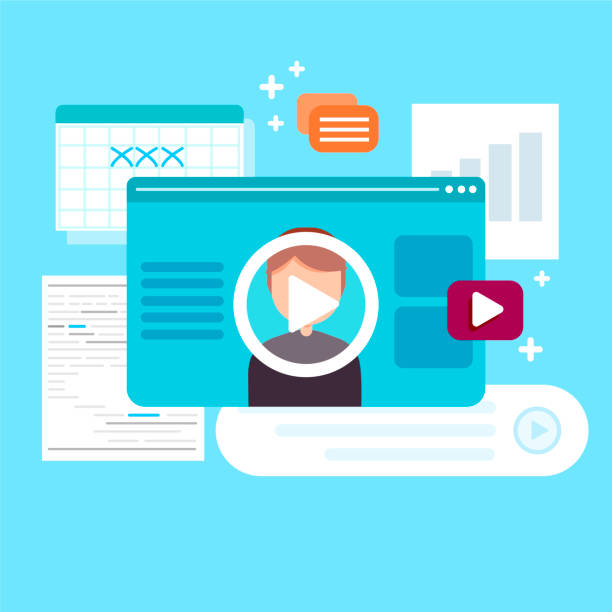Introduction to On-Page SEO: The Cornerstone of Search Result Success
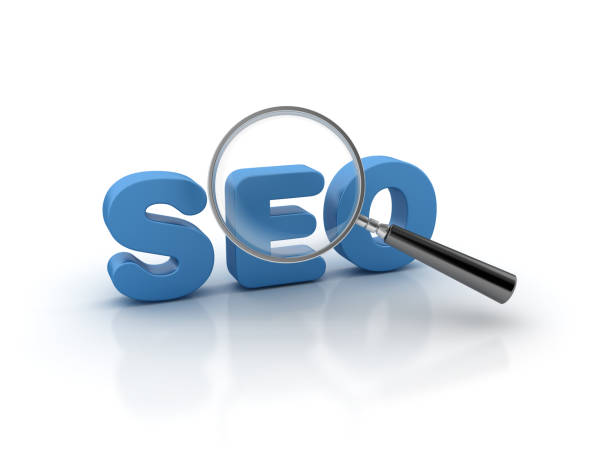
In today’s highly competitive world, a #strong_online_presence is vital for any business.
This is where the concept of #on_page_SEO or on-page optimization gains importance.
On-Page SEO refers to a set of actions you perform within your website to improve its ranking in search engine results pages (SERPs) and attract more organic traffic.
These actions include optimizing content, site structure, and HTML codes.
The primary goal of this type of SEO is to help search engines better understand the topic and content of your pages so they can display them to more relevant users.
This educational and explanatory section clarifies the foundation of SEO for you.
Unlike off-page SEO, which focuses on backlinks and off-site signals, on-page SEO is entirely within your control and, by focusing on content quality and relevance, can directly impact search engines’ understanding of your pages.
Understanding the importance and proper implementation of this optimization segment is the first step towards achieving success in your overall SEO strategy.
This helps search engines understand the true value of your pages and present them to the right audience.
Does your current website build the trust that potential customers should have in your business? If the answer is no, it’s time to get your professional and impactful corporate website with Rasavob.
✅ Fully custom design tailored to your brand identity
✅ Increased lead generation and business credibility in the eyes of customers⚡ Contact us for a free consultation!
Keyword Research: The Backbone of Effective On-Page SEO
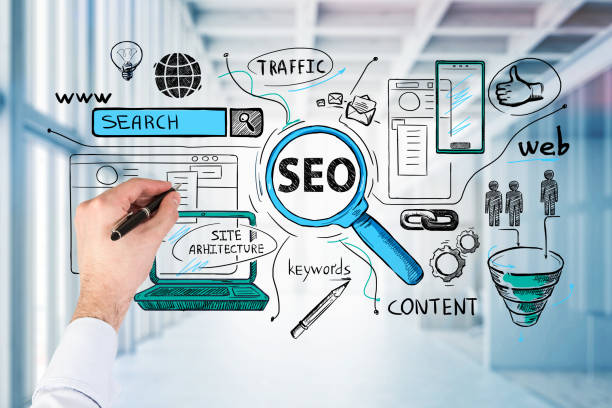
One of the most important steps in an On-Page SEO strategy is keyword research.
Without understanding what terms users are searching for, you cannot produce relevant and optimized content.
Specialized keyword research helps you identify the words and phrases your target audience types into search engines.
This process involves finding both main keywords and long-tail keywords that reflect user intent.
Various tools like Google Keyword Planner, Ahrefs, and Semrush can provide excellent guidance at this stage.
Choosing the right keywords not only helps you create more targeted content but also signals to search engines what your page is about.
For on-page optimization, you should not only target high-volume keywords but also pay attention to keywords with less competition and higher conversion rates.
This analytical approach allows you to discover hidden opportunities and produce content that effectively answers users’ questions and needs.
This step is the foundation of any successful on-page SEO strategy.
Optimizing Content and Its Structure to Attract Users and Search Engines

Content is king! This phrase holds true more than anything else in On-Page SEO.
Content optimization involves ensuring its quality, relevance, and proper structure.
Your content should be specialized yet understandable, answer users’ questions, and provide real value.
Naturally incorporating keywords in titles, subtitles, the first paragraph, and throughout the text is a principle of this optimization.
Also, content length, readability (using short paragraphs, lists, and images), and freshness are important.
For proper structuring, the correct use of Heading tags (H1, H2, H3,…) is crucial, as it helps search engines understand the hierarchy of your content.
Creating engaging content that encourages user interaction can help increase Dwell Time and reduce Bounce Rate, both of which are positive ranking signals.
This analytical and educational section shows you how to satisfy both users and search engines with your content.
Below is a guide table for content optimization:
| Element | Importance in On-Page SEO | Description and Solution |
|---|---|---|
| Page Title (H1) | Very High | Must include the main keyword and specify the main topic of the page. |
| Subheadings (H2-H6) | High | Structuring text, improving readability, using secondary keywords. |
| Content Quality | Very High | Providing accurate and comprehensive information, addressing user needs, content originality. |
| Keyword Density | Medium | Natural and logical use of keywords without overstuffing. |
| Content Length | Medium to High | Depends on the topic and competition; comprehensive content is usually better. |
Optimizing Meta Tags and Meta Descriptions for Higher Click-Through Rate
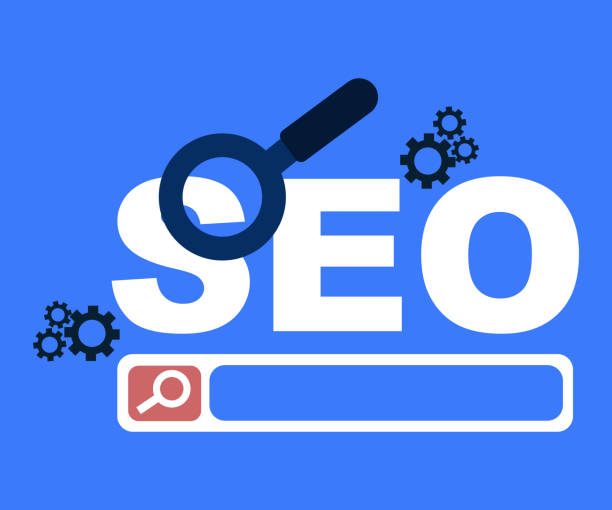
Meta tags, including Meta Title and Meta Description, although having less direct impact on On-Page SEO rankings, play a vital role in the click-through rate (CTR) of your pages in search results.
The Meta Title is your page’s clickable title in SERPs and should include the main keyword and an engaging phrase that encourages users to click.
The optimal length for it is about 50-60 characters to be fully displayed.
The Meta Description is a short and explanatory summary of the page’s content, displayed below the title in search results.
This text should be specialized and persuasive, convincing users that your page is the best answer to their query.
Using keywords in the Meta Description encourages search engines to highlight it in the results.
This part of on-page optimization helps search engines and users understand your page’s content at a glance and decide whether to click on it.
Precise optimization of these elements is an integral part of a successful on-page SEO strategy.
Are you frustrated with the low conversion rate of your online store?
Rasavob is your definitive solution with professional e-commerce website design!
✅ Significant increase in your sales and revenue
✅ Unparalleled user experience for your customers⚡ Get a free consultation now!
URL Structure and Internal Linking: The Architecture of an Optimized Site
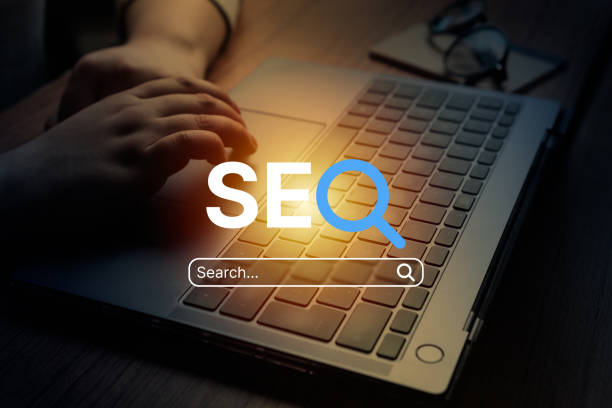
Optimized URL structure and Internal Linking are two other key elements in On-Page SEO that help search engines crawl and index your site better.
Clean, readable URLs that include relevant keywords are not only more understandable for users but also provide signals about the page’s content to search engines.
Avoiding long URLs full of unclear characters is an important guideline.
Internal linking means creating links between different pages of your website.
This not only helps users navigate your site and discover related content but also distributes SEO power (Link Equity) throughout the site.
Using descriptive and relevant Anchor Texts in internal links helps search engines better understand the topic of the linked page.
This explanatory and educational on-page SEO strategy significantly aids in improving the ranking of pages related to internal linking and plays a crucial role in improving site ranking and user experience.
Image Optimization: Enhancing User Experience and Ranking
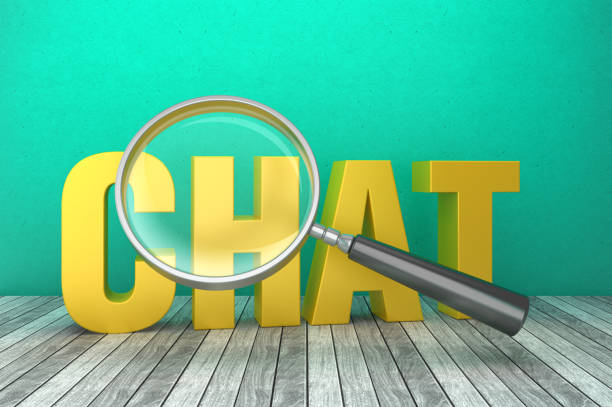
Images are an integral part of website content and can significantly enhance user experience.
However, if not optimized correctly, they can slow down page loading speed and harm On-Page SEO.
Image optimization involves several key steps: explanatory and educational.
First, compressing images to reduce file size without a noticeable loss in quality.
Second, using appropriate formats (like WebP for the web).
Third, naming image files descriptively and including relevant keywords (e.g., use seo-internal-image.jpg instead of DSC001.jpg).
Fourth, and most importantly, filling in the Alt tag (alternative text) for images.
Alt Text helps search engines understand the image content, as they cannot “see” images like humans do.
Also, this tag is essential for users with visual impairments who use screen readers and strengthens your on-page SEO.
These actions not only help site speed but also increase your website accessibility.
Page Load Speed and Core Web Vitals: Critical Metrics for SEO
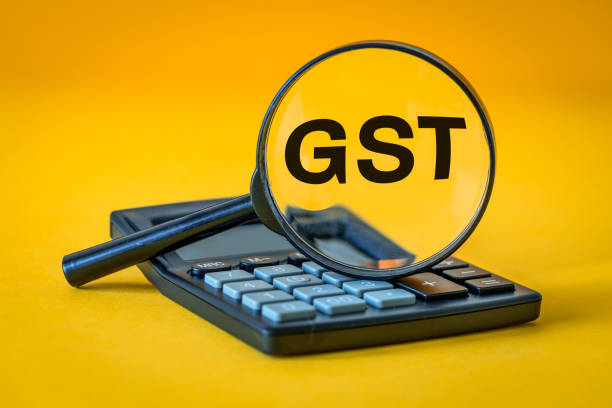
Page load speed has long been an important factor in On-Page SEO rankings, but its importance has significantly increased with the introduction of Core Web Vitals by Google.
Core Web Vitals are a set of user experience metrics that include LCP (Largest Contentful Paint), FID (First Input Delay), and CLS (Cumulative Layout Shift).
These metrics are analytical and informative, referring to the quality of user interaction with the page.
LCP measures the time it takes for the largest contentful element on the page to load.
FID measures the delay between the user’s first interaction (like clicking a button) and the browser’s response.
CLS evaluates the visual stability of the page, meaning the amount of unexpected layout shifts.
Improving these metrics not only helps with better on-page optimization rankings but also significantly enhances user experience.
Tools like Google PageSpeed Insights and Lighthouse can help you assess and improve these metrics.
These factors are very important in on-page SEO.
Below is a table of Core Web Vitals metrics and their importance:
| Metric | Importance | Explanation |
|---|---|---|
| LCP (Largest Contentful Paint) | High | Measures the time it takes for the largest contentful element on the page to load. < 2.5 seconds is ideal. |
| FID (First Input Delay) | Medium to High | Measures the delay between the user’s first interaction and the browser’s response. < 100 milliseconds is ideal. |
| CLS (Cumulative Layout Shift) | Medium to High | Measures the visual stability of the page. The lower (closer to 0), the better. |
Mobile Compatibility and Responsive User Experience
![]()
In the current era, where most users access the internet via mobile devices, website mobile compatibility and providing a responsive user experience (UX) are of paramount importance.
Google has emphasized mobile-first indexing for years, meaning your site’s mobile version is used as the primary criterion for ranking it in search results.
This is a crucial principle in On-Page SEO.
A well-optimized mobile website should load quickly, be easy to navigate, and display content correctly without the need for zooming or horizontal scrolling.
Failure to comply can lead to a drop in search rankings and an increased bounce rate.
Ensuring responsive design and continuously testing mobile user experience is a vital part of guidance and explanation for any on-page optimization strategy.
These efforts not only give positive signals to search engines but also increase user loyalty by providing a pleasant experience for them.
Frustrated with the low conversion rate of your e-commerce site? Rasavob transforms your online store into a powerful tool for attracting and converting customers!
✅ Significant increase in visitor-to-buyer conversion rate
✅ Unparalleled user experience to boost customer satisfaction and loyalty⚡ Get a free consultation from Rasavob now!
Schema Markup and Rich Snippets: Better Display in Search Results

Schema Markup, also known as structured data, is a type of code you can add to your website to help search engines better understand the content of your pages.
These specialized and structured data can be used for various types of content such as articles, products, events, reviews, recipes, and more.
When search engines read these codes, they can display richer information (Rich Snippets) in the search results.
Rich Snippets include additional information like star ratings, prices, preparation times, and product images, which appear alongside the standard title and description in the SERP.
This more visually appealing display significantly increases your click-through rate (CTR), even if your ranking in search results doesn’t change.
Proper implementation of Schema Markup is an important part of On-Page SEO that helps your site stand out among competitors and attract more targeted traffic.
This is an analytical and advanced aspect of on-page SEO that can bring significant competitive advantages.
Monitoring and Adapting On-Page SEO Strategies for Continuous Success
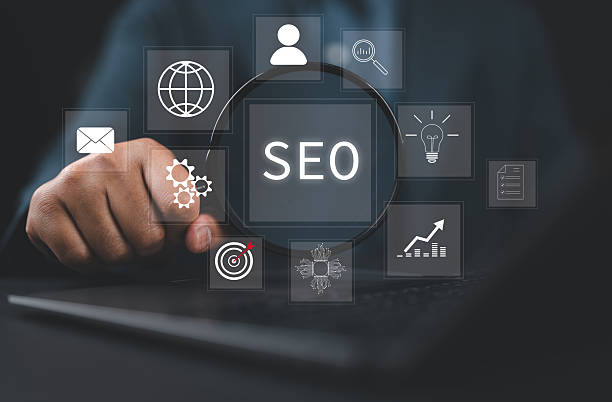
Implementing On-Page SEO is not a one-time process; rather, it requires continuous monitoring and adaptation to changes in Google’s algorithms and user behavior.
After implementing optimizations, you should closely monitor your pages’ performance using tools like Google Analytics and Google Search Console.
These tools provide valuable analytical information regarding traffic, keywords, bounce rate, dwell time, and crawl errors.
Furthermore, the world of on-page SEO is rapidly changing.
What is considered best practice today might become obsolete tomorrow.
Therefore, continuous study of industry news, Google updates, and experimenting with new approaches are essential to maintain a competitive edge.
Sometimes, even entertaining and unexpected content can spark greater user engagement.
This continuous guidance and ongoing optimization approach helps you keep your on-page SEO strategy at its peak and consistently improve your rankings.
Learning from competitors and identifying your strengths and weaknesses is an integral part of this process.
Frequently Asked Questions
| Question | Answer |
|---|---|
| What is Meta Title and why is it important in On-Page SEO? | The Meta Title is the most important element of On-Page SEO, displayed at the top of the browser tab and in search results. It helps search engines and users understand the main topic of the page and should include the main keyword. |
| What role does Meta Description play in On-Page SEO? | The Meta Description is a short summary of the page’s content displayed under the title in search results. Although it does not directly impact ranking, its attractiveness can increase the click-through rate (CTR). |
| How should keywords be used in page content? | Keywords should be used naturally and relevantly in strategic locations such as the title, headings, first paragraph, and body of the text. Avoid excessive keyword stuffing. |
| What is the importance of high-quality and comprehensive content in On-Page SEO? | High-quality, unique, informative, and comprehensive content that addresses user needs is of paramount importance. Search engines give higher rankings to content that provides real value. |
| What is the purpose of Heading tags (H1-H6) in On-Page SEO structure? | Heading tags (H1, H2, H3, etc.) are used to structure content and indicate the importance of different sections. H1 is the main title of the page, and each page should only have one H1. Other tags are used for subheadings. |
| How to optimize images to improve On-Page SEO? | To optimize images, use descriptive Alt Text that includes relevant keywords, reduce the image file size without noticeable quality loss, and use meaningful and relevant file names. |
| What are the characteristics of a friendly URL for On-Page SEO? | A friendly URL should be short, readable, descriptive, include main keywords, and be free of extra characters. The URL structure should be hierarchical and logical to be understandable for both users and search engines. |
| How does Internal Linking help On-Page SEO? | Internal linking, by connecting related pages, helps users and search engine crawlers better understand the site structure, transfers page authority, and increases user dwell time on the site. |
| What is the impact of page load speed on On-Page SEO? | High page load speed is crucial for both user experience and SEO ranking. Slower pages may be ignored by search engines and lead to an increased Bounce Rate. |
| Why is Mobile-Friendliness very important in On-Page SEO? | Given the increasing number of searches via mobile devices, having a responsive and mobile-friendly site is essential for user experience and ranking in search results (Google’s mobile-first indexing). |
And other services from Rasaweb Advertising Agency in the field of advertising
Smart Advertising Campaign: Professional optimization for digital branding using an SEO-driven content strategy.
Smart Conversion Rate Optimization: Transform user engagement with precise audience targeting.
Smart Data Analysis: A fast and efficient solution for increasing sales, focusing on attractive UI design.
Smart Custom Software: A combination of creativity and technology for digital branding through user experience customization.
Smart Direct Marketing: An effective tool for increasing sales with the help of marketing automation.
And over a hundred other services in the field of online advertising, advertising consultation, and organizational solutions
Internet Advertising | Advertising Strategy | Advertorial
Resources
Strategies for Boosting Site Ranking
Attracting Targeted Traffic with SEO
Practical On-Page SEO Training
? Ready to transform your business in the digital world? Rasaweb Afarin Digital Marketing Agency, with expertise in WordPress website design and comprehensive online marketing strategies, paves your path to success.
📍 Tehran, Mirdamad Street, next to Bank Markazi, Kazeroon Janubi Alley, Ramin Alley, No. 6


